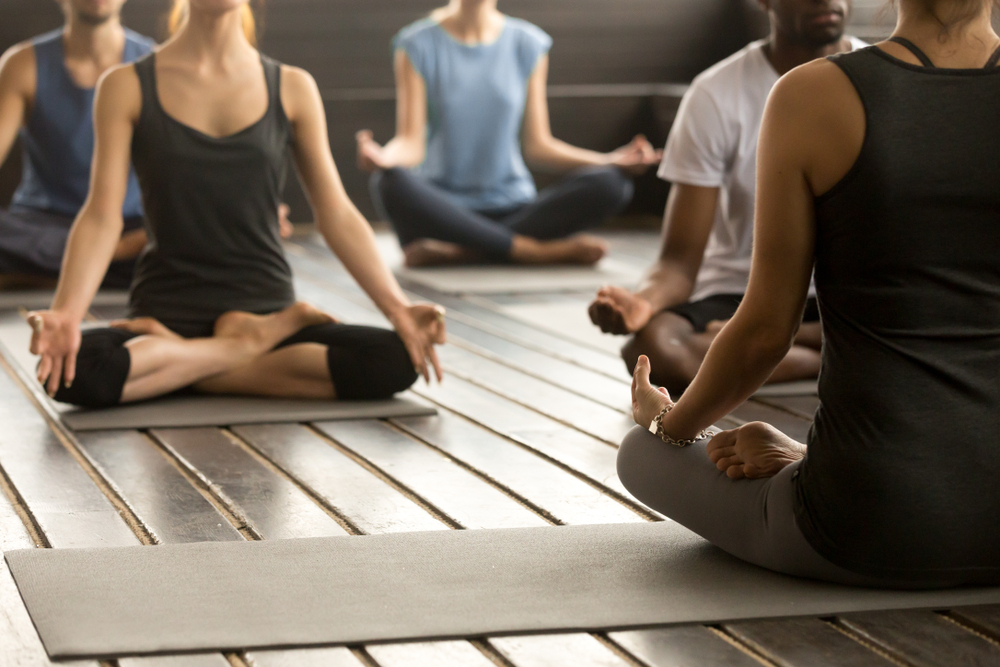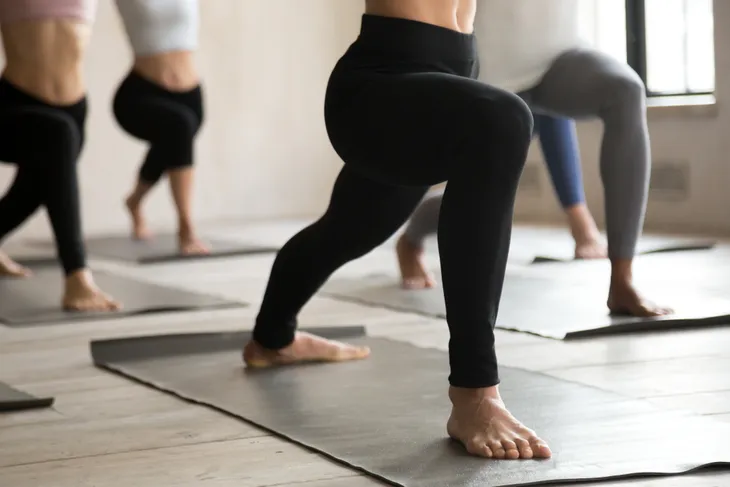There are many reasons why a lot of novice yoga students, or those who have never taken a yoga class before, dread taking one for the first time. As a yoga instructor, I’ve had new students tell me they were once intimidated because yoga has a pretentious air about it. I’ve also heard about yoga classes where the teacher only used the Sanskrit terms to describe poses and completely deterred new students.
Doing any new form of exercise is intimidating enough. But once you add discomfort in the form of unwelcoming or elitist attitudes or vague instructions—you’re bound to make new yoga students feel shunned rather than empowered and engaged. So listen up yoga teachers! Your mission is to make yoga accessible to everyone in your class…
Nix the Chanting
When I trained as a yoga instructor, I immersed myself in the practice and theory of yoga for a solid year. And that was after practicing yoga as a student for 5-years. When I cracked the spine on my first ancient yoga language text, I had no idea what the words in front of me actually meant nor the meaning behind them. It took time, patience, and study. So there’s little wonder why “Lam, Vam, Ram, Yam, Ham, Om” is met with glassy-eyed stares from your beginner yoga class.
I relish the language of yoga and use it in my daily practice, but not everyone understands Sanskrit. While my intermediate and advanced classes might enjoy ending class with a chant and breathing exercise—I also know there is a time and place for it. It’s understandable that my beginner class isn’t big on chanting words that they may not understand. Instead, keep Sanskrit to a minimum and use plain English to get the basics down (i.e., the chakras) before incorporating complicated yoga language.
Offer Modifications for the Masses
You might designate your yoga classes for beginners, intermediate, and advanced level students, but that won’t stop a wide range of experience levels from showing up. Add to that injuries, personal limitations, and different body shapes and sizes and suddenly your perfect lesson plan of synchronized flow gets thrown out the window.
Yoga is a progressive and expressive form of exercise. Sure, we’re all doing the same poses, but the main focus is proper alignment. This is why, for the safety of your students, good yoga teachers offer physical landmarks and modifications (using straps, blocks, blankets, and bolsters) to meet them efficiently.
For instance, with a standing forward fold, offer landmarks for students who can’t fully reach the floor. Students can use modifications by using blocks, straps, or by simply focusing on actively straightening the legs as they bend at the waist and let the upper body hang loose and comfortably.
Cater Yoga Philosophies to Participants
Yoga students come to class for a variety of different and personal reasons. New students often seek out yoga for strength training after suffering an injury or as a stretching technique to compliment another form of exercise (i.e., long distance running). Others are drawn to yoga due to the body-mind connection and physical self-care aspects of the practice.
I personally began yoga to compliment my intense plyometric training workouts. At first the deep spiritual side of yoga turned me off. Sure, I was craving a form of exercise with deeper meaning, but oftentimes yoga instructors with that air of spiritual elitism sent me running from their classes. For this reason, I aim to take a progressive practice approach to new students—one of practical self-love that aims to transcend into their day-to-day lives.
Make Yoga Poses Accessible
Almost everyone knows what Downward Facing Dog is regardless of if they’ve ever taken a yoga class or not. However, do you know what Adho Mukha Svanasana is? My point is that many yoga teachers confuse and disregard new students when they use the Sanskrit terminology rather than the English for yoga poses. As with Sanskrit chanting, I believe while there may be a place for it in advanced classes—novice students are just concerned with getting down the basics.
So leave the yoga jargon to your more advanced students. Extend an air of acceptance to newbies by sticking to basic and clear yoga terminology. If you choose to keep the Sanskrit names for poses, do so in an inclusive manner by also offering up the name for the pose in English so that everyone comprehends the flow of class.
Keep it Simple at the Start
There is a reason why Sun Salutations (or Surya Namaskar) flow together so efficiently in yoga class. The familiar sequence, which dates back to ancient India, is made up of fluid, rhythmic postures (or asanas) to provide an exhilarating cardiovascular workout that matches each inhale and exhale. The purpose is to invigorate the body with breath in one continuous, dynamic flow.
While every yoga teacher yearns to infuse their own, personal creativity into class, oftentimes it’s the most simple, efficient instructions that work best with beginners. Remembering the names of pose and the basics of how to do them is intimidating enough. When you add speed, unfamiliar poses, and a unique flow to the class, basic form and safety can get lost among the confusion.
Connect with Students on a Personal Level
After teaching yoga for almost 10-years, it’s very easy to forget where you came from. However, at one time, I scratched my head over the meaning of Uttanasana (Mountain pose). And even though I pull off a pretty spiffy Triangle pose (Trikonasana) today, I once agonized over proper alignment while attempting to keep my pelvis and heart shining towards the ceiling like the rest of my beginner class. Fortunately, we can all draw from this place of uncertainty as teachers to connect and support our new students.
This is why I choose to show a very personal side when I teach yoga. I remind novice students to go at their own pace and listen to their bodies. I offer landmark goals and props to achieve poses. I assure my new class that every yogi was once a beginner, even the masters. And I tell them that we all feel clumsy and awkward when attempting something new, but we are brave for doing so.









